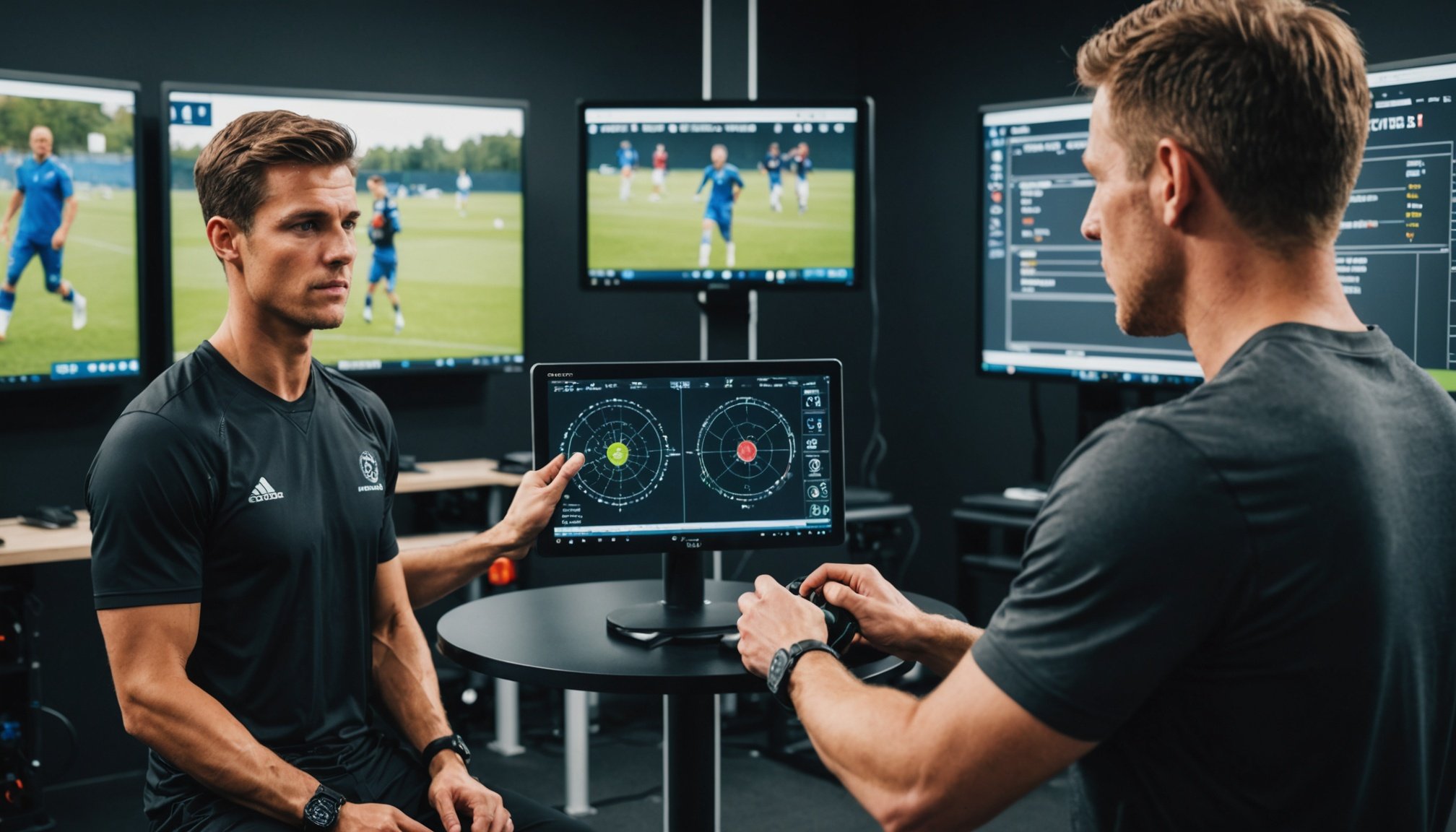Understanding Dynamic Visual Acuity Training
Dynamic visual acuity (DVA) refers to the ability to see clearly and accurately when objects are in motion. This capability is especially critical in sports, where athletes need to swiftly track moving elements, whether it’s a ball or an opponent. High-level sports performance enhancement hinges on such precise visual skills, making DVA training essential.
Visual acuity impacts athletic performance by allowing the athlete to maintain focus and make quick decisions. In many sports, milliseconds can dictate victory or defeat; hence, superior DVA can offer a competitive edge. For instance, a baseball player’s split-second decision on whether to swing can be improved through enhanced visual acuity.
Additional reading : Unlocking Potential: How Adaptive Training Programs Propel Aging Swimmers in Competitive Arenas
The scientific principles behind dynamic visual training are rooted in neuroplasticity—the brain’s adaptability to training stimuli. Exercises designed to boost DVA can rewire neural pathways, sharpening visual clarity and speed. This is achieved through specific drills tailored to improve focus, tracking, and coordination. Athletes engaging in DVA training often report more precise visual perception and better overall athletic output, thus underscoring its value in sports performance enhancement.
Techniques and Methods in Dynamic Visual Acuity Training
In the realm of dynamic visual acuity training, various visual training techniques and methods have been devised to enhance athletic performance. Popular drills often focus on improving hand-eye coordination and reaction times. For example, athletes might engage in exercises like tracking moving objects with their eyes while performing other tasks. These drills support the development of faster and more accurate visual processing.
Also to read : Transform Your Runs: Leverage Advanced Insole Sensor Innovations to Perfect Technique and Reduce Injury
Equipment and technology also play a vital role in this training. Many programs incorporate digital aids such as stroboscopic glasses that intermittently block vision, forcing the brain to process visual information more efficiently. These glasses are particularly effective in refining focus and quick decision-making capabilities.
Integrating dynamic visual training into practice routines involves structured session planning. Athletes should start with basic drills, gradually increasing the complexity as they become more proficient. Coaches often tailor routines to meet specific sports requirements, ensuring that the methods used align with the demands of the sport. By consistently implementing these visual training methods, athletes can achieve significant improvements in visual perception, ultimately contributing to their sports performance enhancement.
Benefits of Dynamic Visual Acuity Training
Dynamic visual acuity training offers significant benefits, notably enhancing reaction times, which is crucial for athletes. Quick reaction times enable athletes to respond instantly, often making the difference between success and failure in critical moments. For instance, improved reaction times can help a footballer anticipate an opponent’s move or a tennis player return a serve effectively.
Another key benefit is the improvement in hand-eye coordination. Precise hand-eye coordination allows athletes to synchronize their movements with visual stimuli, facilitating more accurate and timely actions. This coordination is essential in high-speed sports, improving overall performance and execution.
Additionally, dynamic visual acuity training elevates cognitive functions such as spatial awareness, crucial for navigating complex game environments. Enhanced spatial awareness helps athletes understand and react to their surroundings, predicting opponents’ actions and positioning themselves better.
These benefits collectively provide a sports advantage, giving athletes the tools to excel by capitalizing on their sharpened visual and cognitive skills. These improvements translate to tangible performance gains in competitive settings, making the training indispensable for those aiming for excellence.
Success Stories and Case Studies
Dynamic visual acuity training has undeniably transformed athletic prowess across various sports disciplines. Here are case studies and success stories that highlight its effectiveness. A noteworthy example involves professional baseball player Sarah Thompson. She underwent targeted visual training sessions and saw a 15% increase in her batting average. This was attributed to refined eye-tracking and improved split-second decision-making.
In another inspiring instance, the Seattle Seahawks, an NFL team, integrated dynamic visual training into their regimen. Their success stories reveal enhanced sports performance metrics, such as faster reaction times and better on-field coordination, contributing significantly to their season triumphs.
Quantitative case studies provide substantial data backing these anecdotal evidences. A controlled trial with soccer players using eye-tracking exercises showed a significant reduction in off-target passes and an increase in successful tackles. These athlete examples underscore the practical benefits of incorporating dynamic visual acuity training.
Such examples and real-life outcomes foster a deeper understanding of the impact and value of visual training, guiding coaches and athletes in prioritizing these methods in their performance enhancement strategies.
Expert Opinions on Dynamic Visual Acuity Training
Dynamic visual acuity training has garnered significant interest from sports scientists and trainers. Their expert insights reflect the crucial role visual training plays in enhancing athletic prowess. Dr. Lisa Sanders, a renowned sports scientist, emphasises that dynamic visual acuity training integrates cognitive training with physical exercises, thereby offering a comprehensive approach to performance improvement.
Professional opinions often highlight its edge over traditional training methods. While conventional drills focus primarily on physical fitness, dynamic visual training bridges the gap between visual acuity and cognitive function, fostering a holistic development framework. Trainer John Davis comments that incorporating this training helps athletes not just see and react quicker but also process information faster under pressure.
Comparisons to traditional methodologies often showcase the superior effectiveness of visual training. While standard techniques aim at physical conditioning, dynamic visual acuity training upgrades both mental and physical faculties, ensuring athletes are primed for high-pressure situations. Numerous case studies validate these professional opinions, indicating marked improvements in sports performance, which aligns with the evolving understanding of comprehensive athlete development.
Visual Aids and Resources for Implementation
Incorporating visual aids can significantly elevate the effectiveness of dynamic visual acuity training. Instructional videos serve as a crucial resource for athletes and coaches, illustrating precise execution of training exercises. These videos provide step-by-step guidance, ensuring that users can replicate the methods accurately in their practice routines.
Educational platforms offer a variety of resources designed to enhance understanding of visual training techniques. These resources often include downloadable diagrams and detailed explanations of exercises tailored to improving visual acuity. By accessing these platforms, athletes can deepen their knowledge and optimize their training methods.
Creating a personalised visual training regimen is essential for addressing each athlete’s unique needs and sports objectives. A well-rounded regimen incorporates a combination of the following elements:
- Interactive videos for engaging learning
- Customised diagrams to aid understanding
- Periodic reassessment to track progress and adjust techniques
Such a regimen ensures a targeted approach to sports performance enhancement, allowing athletes to fully harness the benefits of visual training. By leveraging these resources, athletes can achieve a competitive edge in their respective sports disciplines.



